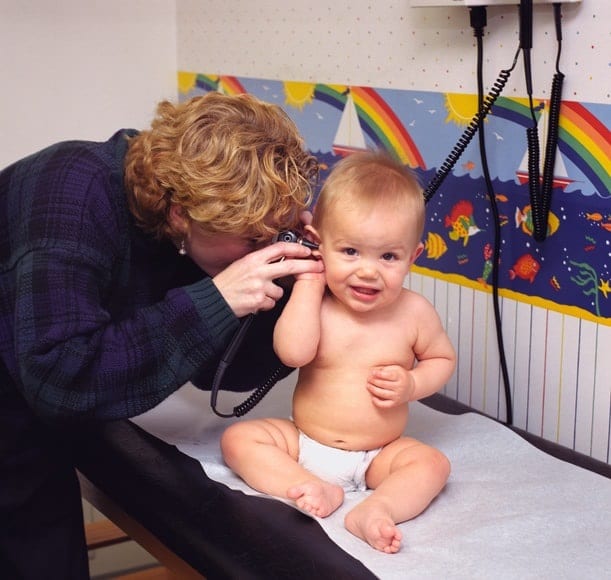Ear tube surgery is performed in order to treat and prevent middle ear infections. The procedure is mostly performed on children; this is because children’s Eustachian tubes – which connect the middle ears to the back of the throat – are much shorter and more horizontal than adults’, making it harder for fluid to drain from their middle ears.
What Are Ear Tubes?

Ear tubes are tiny tubes made of metal or plastic. During an ear tube surgery, they’re placed in a tiny hole in the eardrum so that air and fluid can move through the ears. Other terms for ear tubes include tympanostomy tubes, myringotomy tubes, ventilation tubes and pressure equalization tubes.
How Is Ear Tube Surgery Performed?
The first step in performing ear tube surgery is to put your child under general anesthesia so that they’re asleep and pain-free. The anesthesiologist will carefully monitor your child throughout the procedure to keep them safe and comfortable.
Next, the ear, nose and throat (ENT) physician will make a small hole in each eardrum. Using suction, they’ll then remove any fluid behind the eardrum. Finally, they’ll place the tubes.
The entire procedure takes only about 10 to 15 minutes.
What Happens After Ear Tube Surgery?
Immediately after surgery, your child will be taken to a recovery room where they’ll wake up. If all goes well and there are no underlying medical problems, you and your child can return home within a few hours.
When your child gets home, they may feel nauseous and/or have an earache. Their ears may pop when they chew, yawn or burp.
Your ENT physician may recommend earplugs when your child is bathing or swimming at Northbridge Pool in order to keep water from getting in the middle ears.
Do the Ear Tubes Need to Be Removed?
In most cases, ear tubes fall out on their own after six to 18 months. If the tubes remain in place for beyond two to three years, they may need to be removed.
For more information or to schedule an appointment with an ear tube expert, call Palmetto ENT & Allergy today.
